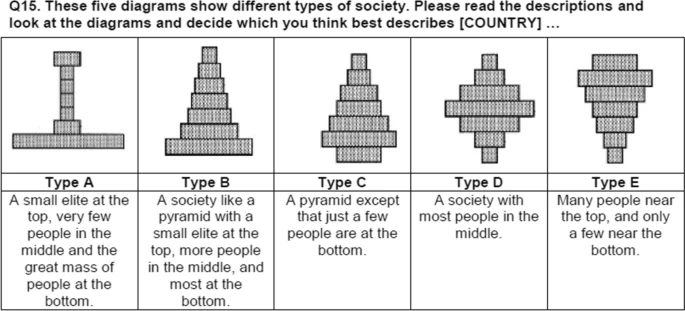A Twofold Subjective Measure of Income Inequality
Attila Gáspár, Carmen Cervone, Federica Durante, Anne Maass,
Caterina Suitner, Roberta Rosa Valtorta & Michela Vezzoli
Social Indicators Research (2023) Published:
Abstract
Social scientists have been aiming to calculate a “subjective income Gini coefficient”of survey respondents that would describe their beliefs about income inequality in their country. Niehues (Subjective perceptions of inequality and redistributive preferences: an international comparison, Cologne Institute for Economic Research, IWTRENDS Discussion Paper, 2014) derives this estimate from respondents’ beliefs about the relative sizes of different social classes (answers to “shape of society” questions), while Kuhn (The individual perception of wage inequality: a measurement framework and some empirical evidence, Technical report, Institute of Labor Economics (IZA), 2015) estimates it using beliefs about the pay structure. We combine their efforts to calculate what we call a twofold subjective Gini coefficient, which incorporates both pieces of information independently from one another. We present the country-level distribution of perceived and desired twofold subjective Gini coefficients using the ISSP Social Inequality V survey (ISSP Research Group in International social survey programme: social inequality v—issp 2019, 2019. https://doi.org/10.4225/13/511C71F8612C3). Accounting for both subjective class structure and pay structure yields much lower perceived and desired levels of inequality. At the country level the averages of the twofold subjective Gini coefficients are closer to actual income Gini coefficients than the previous measures. At the individual level the twofold subjective Gini coefficients are better predictors of the individual’s verbal assessment of inequality and their preferences towards redistribution.
At the country level the averages of the twofold subjective Gini coefficients are closer to actual income Gini coefficients than the previous measures. At the individual level the twofold subjective Gini coefficients are better predictors of the individual’s verbal assessment of inequality and their preferences towards redistribution.


